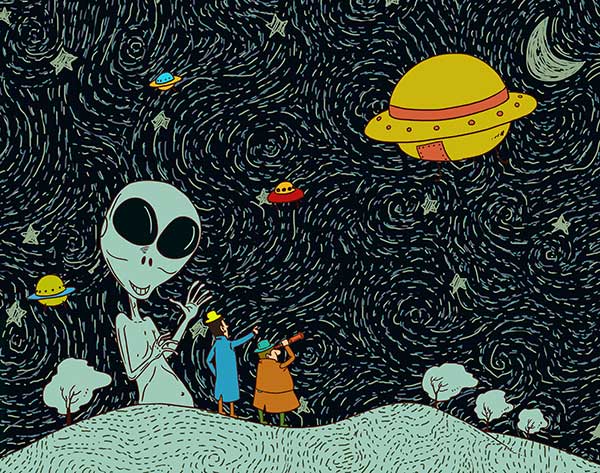 |
|
An artist’s rendering of the top view of the Thirty Meter Telescope.[Photo provided to China Daily] |
"If we find a lot of oxygen molecules in the atmosphere of an extraterrestrial planet, they are probably produced by life activities," Mao says.
The most common method of searching for extraterrestrial life is to search first for planets similar to Earth, with plenty of sunshine, liquid water and a protective atmosphere.
However, that method is constantly questioned as some speculate that life elsewhere in the universe may be markedly different to that on Earth.
"We don't know how to start if we don't know what kind of life we are looking for," Mao says. "At least we know what conditions are needed for life on Earth, so scientists tend to search for planets around sun-like stars and put forward the concept of the 'habitable zone'."
The "habitable zone" is the distance from a star where a planet could have liquid water.
"However, nature has a much more wild imagination than we do," Mao says. "For example, whether life can exist in ice at extremely low temperatures is unknown to us. It's easy for scientists to start with familiar conditions and then gradually expand the search to an unknown territory."
Over the past 10 years astronomers worldwide have identified more than 3,000 extra-solar planets. However, most are giant planets, probably composed of gas, because they are more easily detectable.
A few dozen are Earth-like planets, which are probably composed of silicate rocks or metals and may have water on them.
"Astronomers first pick sample planets suitable for life, and then think about further study and analysis, or even communication with them," Mao says.
To further analyze the atmospheric composition of a planet, the telescope must be very sensitive to the sharp contrast of the light intensity between the star and the planet. The Earth is about one billionth of the sun in optical brightness, a contrast still far beyond the range of current telescopes.
|
|
|
|
|
|
|
|
